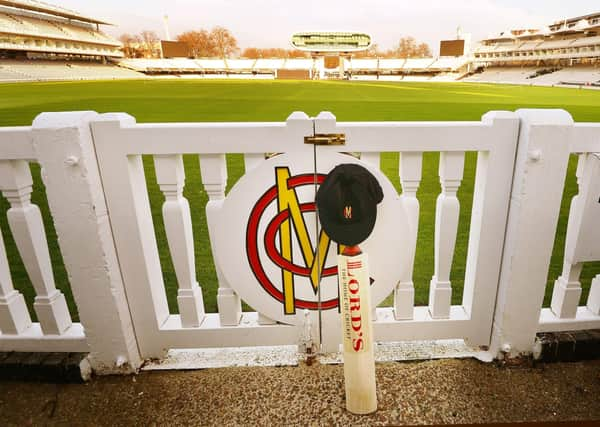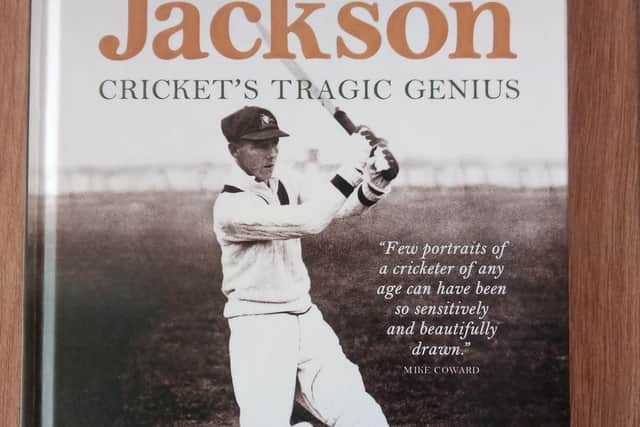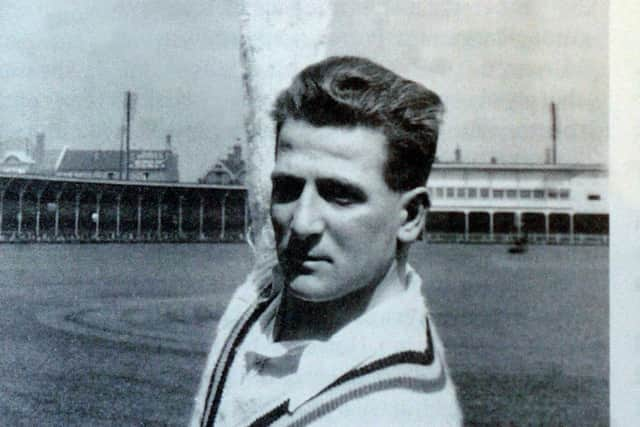Cricket tragedies recalled - sporting bygones


From Sydney to St Lucia, from New South Wales to old South Wales, the death of the talented left-hander reverberated throughout the game and continues to do so.
A campaign launched in the immediate aftermath of Hughes’s death saw people around the world paying tribute to him by “putting out their bats”, as it was called, and sharing the resultant images on Twitter.
Advertisement
Hide AdAdvertisement
Hide AdHughes’s Test number (408) adorned everything from armbands and shirts to the back of team-mates’ bats, while his passing was routinely acknowledged by sky-gazing batsmen upon reaching three figures.


Eighty-one years earlier, cricket – and Australian cricket particularly – lamented the death of another New South Wales batting prodigy revered by players and supporters alike.
Naturally, the outpouring of grief and emotion was not nearly so widespread in the pre-Internet era, one in which the word “twitter” was happily still primarily associated with chirping noises.
But it still echoed as far and as forcefully as any young cricketer’s death could have echoed in the early 1930s, a cricketer who stood comparison with the great Don Bradman.
Advertisement
Hide AdAdvertisement
Hide AdHis name was Archie Jackson, and his memory and achievements are preserved in a classic biography by David Frith, first published in 1974, and now revised and updated by this brilliant writer and gentleman to boot.


Whereas Hughes was killed in the line of duty, batting for New South Wales against South Australia in Sydney, his score forever stuck on 63 not out, Jackson was a victim of pulmonary tuberculosis at the age of 23.
It had started to wreck his lungs on the tour to England three years earlier in 1930, when he made one of his eight Test appearances in the Headingley match immortalised by Bradman’s then world record score of 334, but it went undiagnosed and did its cruel, insidious damage unseen.
Finally, in early February, 1933, Jackson collapsed after playing cricket and passed away later that month on the very day that England regained the Ashes in the Bodyline series in the fourth Test in Brisbane.
Advertisement
Hide AdAdvertisement
Hide AdTeam-mates and opponents were united in their sadness; Harold Larwood, the England pace bowling spearhead during that match, recalled in his foreword to Frith’s 1974 edition – reproduced once more – that “we felt the depression that was cast over the ground when early that morning the news came through that Archie was no more”.
Even now, almost 50 years on, Larwood’s foreword gives the updated volume – now subtitled ‘Cricket’s Tragic Genius’ as opposed to the previous ‘The Keats of Cricket’ – a pathos that has lost no power with the passage of time.
The pair were friends, their mutual respect forged when Jackson scored 164 against Larwood and company on his Test debut at Adelaide in 1929.
Jackson brought up his century after opening the Australian innings by cover-driving Larwood to the boundary.
Advertisement
Hide AdAdvertisement
Hide Ad“That glorious stroke has lived in my memory to this day for its ease and perfect timing,” wrote Larwood in the foreword.
“I am sure that few among the many thousands present sighted the ball as it raced to the boundary.”
Larwood said that the Englishmen counted Jackson as “one of us” – not a million miles from the truth, in actual fact, as Jackson had been born in Rutherglen, south of Glasgow, in 1909, before the family left Scotland when he was a boy.
Larwood added that Jackson “was always friendly, no matter the tenseness of the situation” and that “you just had to find a place in your heart for a fellow like him”.
Advertisement
Hide AdAdvertisement
Hide AdUntil his own dying day in 1995, one of Larwood’s most treasured possessions was a telegram sent to him by Jackson from his hospital bed.
Referencing Larwood’s bowling, it read: “Congratulations. Magnificent bowling. Good luck all matches. Archie Jackson.”
As Larwood concluded: “At the time, he must have been very close to meeting his Maker, but he was still conscious enough to remember an old friend.”
Had Jackson not been so cruelly chopped down, the outcome of the Bodyline campaign might have been different.
Advertisement
Hide AdAdvertisement
Hide AdIndeed, Larwood always reckoned that Jackson, not Bradman, was the man who could have tamed him, once remarking – in a sharp dig at Bradman, perhaps – that: “I never knew him (Jackson) to flinch or complain… he did not seem to hit the ball, he caressed it. He wasn’t like some of the grumblers.”
Sadly, the impact that Jackson might have had on that series – and on cricket per se – is as imponderable as the time-honoured question: “How long is a piece of string?”
What can be said with certainty is that this team-mate of Bradman was regarded in similarly exalted terms, a man who evoked memories of, and comparison with, another Australian batting genius: Victor Trumper.
Tall and willowy, with exquisite light footwork, Jackson was a graceful player adept at wristy flicks and delicate glances, interspersed with powerful flourishes.
Advertisement
Hide AdAdvertisement
Hide AdHe appeared on the first-class scene in 1926-27, his club captain at Balmain, the great Australian leg-spinner Arthur Mailey, having previously predicted/quipped: “Young Jackson is going to wreck the averages of some bowlers. Fortunately, I’m in the same team, so it won’t be mine.”
After his hundred on Test debut, great things of Jackson were widely forecast, but he made only two further half-centuries at Test level as the ravages of illness slowly took root.
He struggled for form on the 1930 tour of England while Bradman flourished, his gutsy 73 in the final Test at The Oval an isolated highlight.
As Frith’s book of meticulous and original research reveals, however, Jackson was a star-in-the-making and greatly respected for his warmth of character.
Advertisement
Hide AdAdvertisement
Hide AdSympathetically and sensitively written by an outstanding author, the book is every bit as deft and stylish as one imagines Jackson the batsman to have been.
Following Jackson’s untimely death, the tributes were as glowing as the ones, years later, that attached themselves to Hughes.
Johnnie Moyes wrote of Jackson in Sydney’s Sun newspaper: “He flashed across the cricket skies like a meteor. We had not realised, to the full, the brilliancy of his art when suddenly he was gone, but he left cricket the richer for his brief sojourn.
“He left, too, memories that we will cherish of a truly great batsman and a splendid sportsman.”
Advertisement
Hide AdAdvertisement
Hide AdCliff Winning, a Balmain historian, wrote: “He was one of the most lovable characters to ever don cricketing attire and was accepted by all who knew him as a gentleman by instinct, modest and retiring and one who practised the true culture of the mind, his thinking always being clear and clean and Christianlike.”
Perhaps the greatest tribute came from Bradman, one of the pall-bearers at Jackson’s funeral.
He described his old team-mate quite simply as “a batting genius”.
Archie Jackson: Cricket’s Tragic Genius by David Frith is published by Slattery Media Group in Australia. For further details/to order, visit: slatterymedia.com
Comment Guidelines
National World encourages reader discussion on our stories. User feedback, insights and back-and-forth exchanges add a rich layer of context to reporting. Please review our Community Guidelines before commenting.